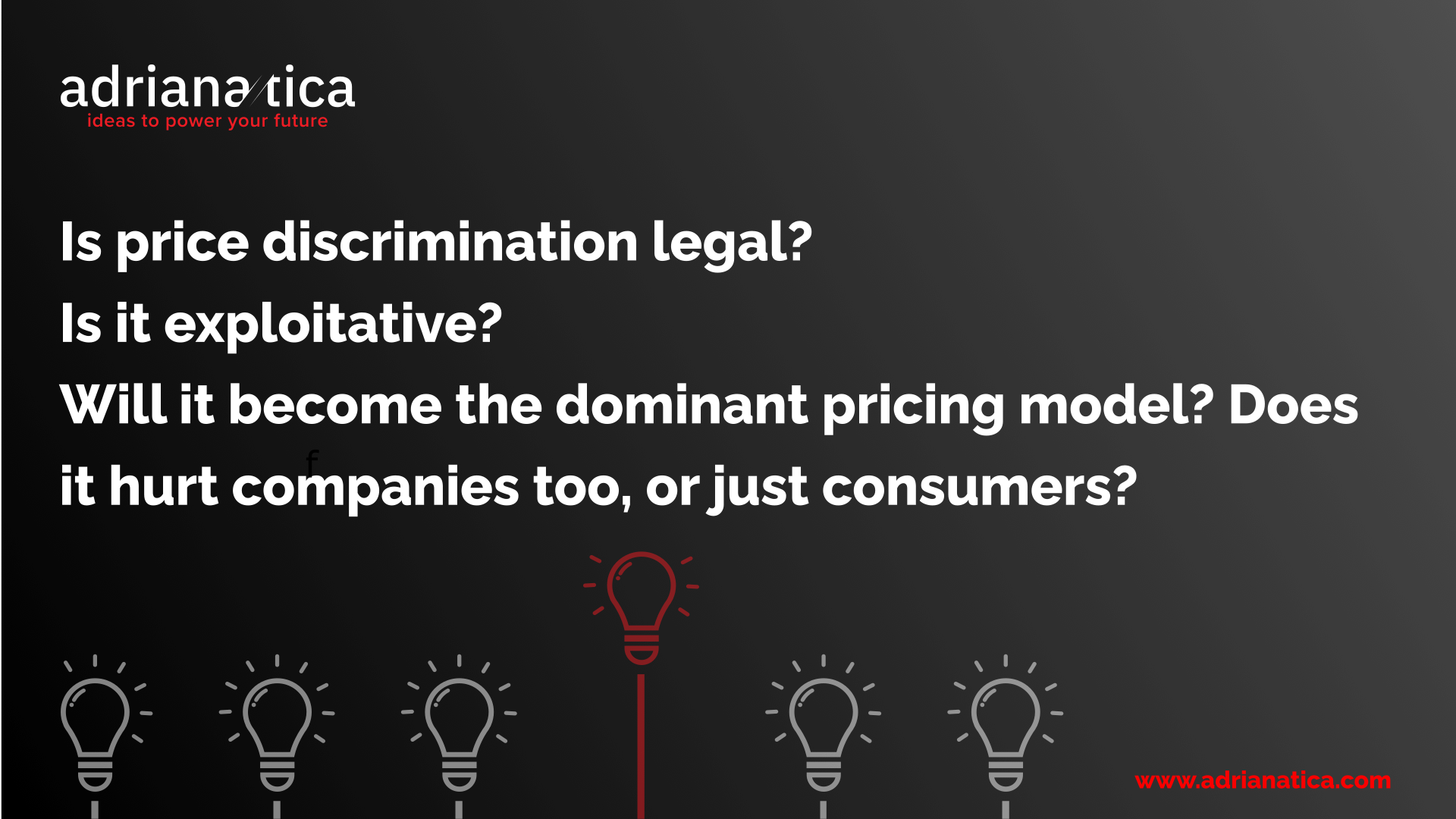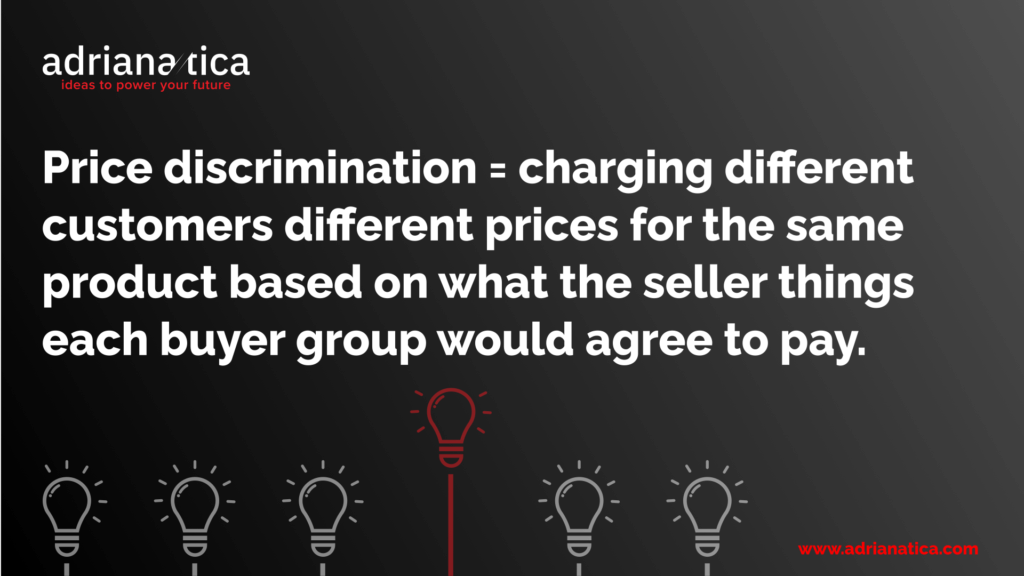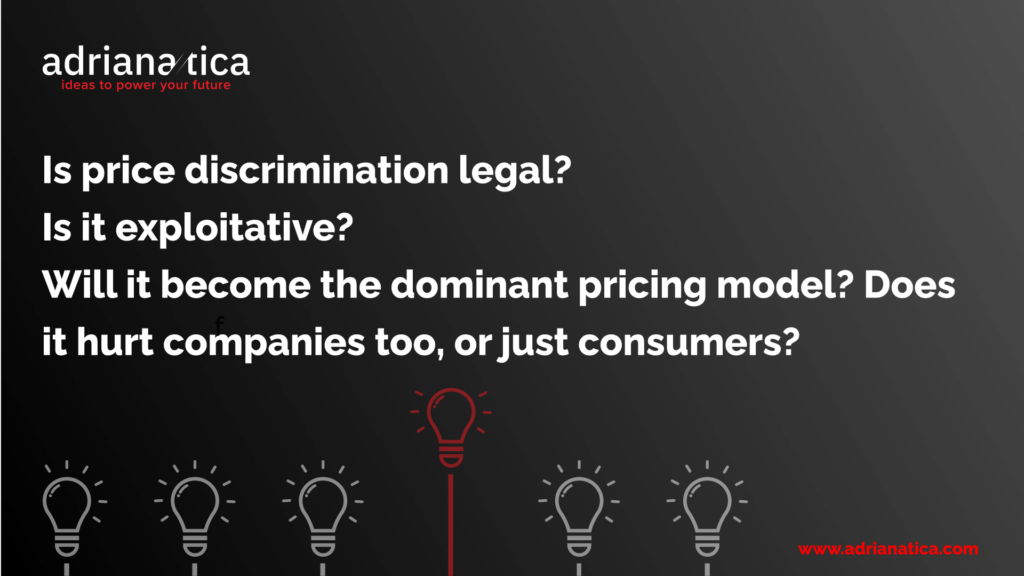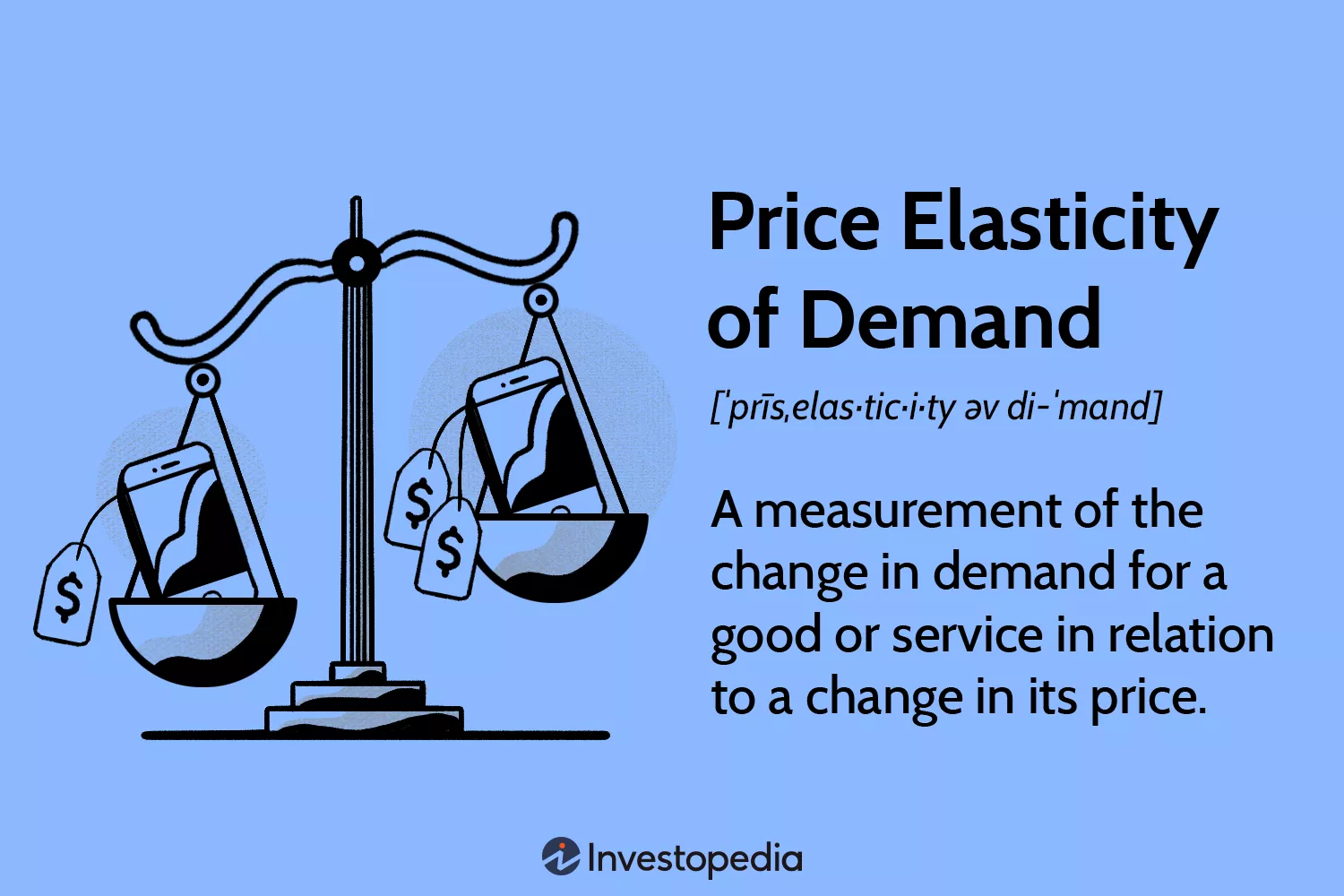
Al Gore famously complained that his mother-in-law and his dog take the same medicine for arthritis but the former pays almost thrice the price. It happened during his presidential campaign in 2000 and, while he was accused of fudging the facts and tweaking the numbers, his example is perfectly valid: some people pay more than others for the same product or service.
This is price discrimination.
Let me give you a few other examples: did you ever wait for Black Friday to buy a laptop hoping that the price will drop massively? Set a price alert for plane tickets to an exotic destination? Or saw that groceries are more expensive in another part of your city?
These are three of the most common examples of price discrimination.
However, price discrimination happens more often than you think — we just don’t always look for the signs.
My subscribers read this article before anyone else. Want in? Sign up for my newsletter and you’ll be the first to learn when I publish something new.
- What Is Price Discrimination?
- Three Types of Price Discrimination
- It Costs as Much as You Are Willing to Pay
- Is Price Discrimination Legal?
- Price Discrimination Prerequisites
- Who Benefits from Price Discrimination?
- Is Price Discrimination Exploitative?
- Will Price Discrimination Become the Dominant Pricing Model Across Industries?
- The Way Out of a Complicated Pricing Affair
What Is Price Discrimination?
Price discrimination is a selling strategy that involves charging different customers different prices for the same product or service based on what the seller thinks each buyer group would agree to pay. In other words, price discrimination helps companies maximize their profits by betting on the maximum amount you’d be willing to pay for their services at a certain time.

As the name suggests, price discrimination is based on a bias: the seller believes that certain categories of people will be willing to pay more for the same product or service.
For example:
- Consumers in more affluent parts of a city (or the world) are willing to pay more for the same product. The Economist’s Big Mac Index is a great example here, as it shows how widely the price of the same product (the Big Mac) can vary across the world.
- Some products cost more for seniors than for younger people — life insurance gets more expensive the older you get.
- Business travelers are willing to spend more on airfare than leisure passengers.
- In the SaaS industry, you will pay less for your subscription if you’ve started it some time ago. For instance, I pay less than half for my Sendible subscription that’s been ongoing for more than seven years now. This is called grandfathering and it means that you will keep the price you started out on, but it is essentially another form of price discrimination.
The bias varies depending on the type of price discrimination, but you’ll typically find it revolving around the willingness/ability to pay more and the urgency of the purchase.
Three Types of Price Discrimination
First-Degree Price Discrimination
You’ll also find it under the names of perfect price discrimination or personalized price discrimination. This strategy requires that the seller know exactly how much each customer (segment) is willing to pay for a product or price.
It’s called perfect price discrimination because it rarely happens — although not for lack of trying. You’ll find it illustrated best in second-hand car sales, where the salesman tries to figure out your budget and sell you a car that matches it to a T.
However, used car sales tactics are also changing. Face-to-face negotiations are being replaced by online purchases, where fewer salesmen are involved. Nonetheless, the principle remains: car sellers use data mining to figure out what you’d be willing to spend.
Second-Degree Price Discrimination
In second-degree price discrimination, the seller doesn’t have access to data on how much each client is willing to spend — or doesn’t want to use it. So they discriminate based on the quantity the client buys.
You’ll see second-degree discrimination in:
- Two-for-one offers
- Bulk discounts
- Loyalty programs and discounts for frequent buyers.
Third-Degree Price Discrimination
Third-degree price discrimination is the most common type. It’s also known as group pricing because it discriminates based on certain socio-demographic traits.
For example:
- Reduced museum tickets for seniors, children, or students
- Last-minute travel packages BUT
- Plane tickets bought in advance
- New telecom customers being offered better deals than existing ones
- Al Gore’s dog paying less for his arthritis medicine than his mother-in-law
This last example tells us almost everything we need to know about price discrimination.
It Costs as Much as You Are Willing to Pay
Why would dog medicine be cheaper than human medicine? Simple: because dogs don’t have any money.
And because conventional wealth holders (that’s only humans, as far as we know) are more willing to pay for their own health than for that of their furry companions. Given the choice, most pet owners will choose their well-being over that of their pets.

Is Price Discrimination Legal?
You read discrimination and you have to ask about legality, right?
There is no simple, yes or no answer to this questions. Things are complicated.
European Union Law clearly states that you shouldn’t pay more for the same products just because of your nationality. But if you tried to buy the same plane ticket from two different EU countries (or using a VPN) you’ll find that things aren’t exactly as advertised.
While the EU (and most countries) clearly forbid discrimination by gender, nationality, religion, and other sensitive attributes, you’ll be hard-pressed to find the same price for the same product everywhere and anytime.
The CJEU ruling C-525/16 in the MEO v. Autoridade da Concorrencia case in April 2018 sheds a bit more light on what the European courts consider unfair discrimination. The key takeaway of the ruling is this:
“Differentiated pricing is not abusive per se and can constitute an abuse of dominant position only where the conduct at stake is “actually capable of distorting competition.”
CJEU ruling C-525/16 in the MEO v. Autoridade da Concorrencia case
What’s interesting about this ruling is that the court doesn’t consider vertical integration a prerequisite for abusive price discrimination. This means that a company can be found guilty of abusive price discrimination without proof that said discrimination led to
“actual, quantifiable deterioration in the competitive situation.”
CJEU ruling C-525/16 in the MEO v. Autoridade da Concorrencia case
Interestingly enough, some price discrimination techniques may be illegal, like selling bundled products if the sum of the prices of the separate products is higher than the bundled price. This practice may be anti-competitive or illegal because it might exclude competitors who only sell some of the products in the bundle.
In the US, the antitrust laws make room for quite some leeway in price discrimination. The Sherman Antitrust Act is more concerned with monopolies and
“agreements among competitors to fix prices, rig bids, and allocate customers, which are punishable as criminal felonies.”
Justice.gov
The Federal Trade Commission Act and the Clayton Act are civil statutes that carry no criminal penalty. In essence, they are both concerned with unfair competition and mergers and acquisitions that are likely to lessen competition and lead to monopolies.
The Robinson-Patman Act hits a bit closer to home, although it is now considered obsolete and in dire need of a thorough “refurbishment”. According to the FTC,
“price discriminations are generally lawful, particularly if they reflect the different costs of dealing with different buyers or are the result of a seller’s attempts to meet a competitor’s offering.”
ftc.gov
However,
“A seller charging competing buyers different prices for the same “commodity” or discriminating in the provision of “allowances” — compensation for advertising and other services — may be violating the Robinson-Patman Act.”
ftc.gov
I won’t bore you with legalese from more countries or regions. In essence, price discrimination is legal in states where the economy is not state-controlled.
If you skimmed the quotes above, I don’t blame you! But I’d like to point out something essential: price discrimination is legal, but monopolies are not.
The antitrust laws try very hard to prevent monopolies — and they succeed in most cases!
Monopolies are the ultimate level of power. You don’t need a monopoly to implement successful price discrimination strategies. But you do need a certain level of power.
Price Discrimination Prerequisites
There’s nothing stopping you from charging different prices to different customers. But if you want this strategy to be successful, you’ll need a few things:
1. A Certain Level of Market Dominance
Remember what I said above about monopolies? They are illegal. You don’t need a monopoly to implement price discrimination.
But you need a significant market share. Otherwise, buyers who don’t fall into the most advantageous category will look elsewhere. This is often called imperfect competition.
And this is where things get murky.
In the EU, article 102 TFEU clearly prohibits companies from
“applying dissimilar conditions to equivalent transactions with other trading parties, thereby placing them at a competitive disadvantage”.
eur-lex.europa.eu
This article refers to unlawful competition or restricting competition. To qualify as abuse, price discrimination needs to have restricted competition or prevented competitors from conducting business, which is very hard to prove.
Price dominance is legal as long as it doesn’t impede fair competition. If you already have a certain degree of market dominance, it may be tempting to use price discrimination to increase your market share.
This is where you should be very careful, though. It’s fairly easy to go from a comfortable market share to unlawful pricing practices.
2. Control Over the Arbitrage of Your Products
To implement price discrimination successfully, you need to make sure that:
- Your buyers won’t resell your products at prices below your highest tier.
- No category of buyers can purchase products at prices targeted for another category (also known as “transferability of demand”.)
For instance, if you offer discounted museum tickets for seniors, you need to make sure that:
- The senior buyers won’t sell those tickets to younger people for prices slightly higher than what they paid, but still lower than what a middle-aged client would pay.
- Middle-aged buyers can’t buy senior tickets.
This is a fairly simple example — you can prevent both these behaviors by asking for IDs when purchasing the tickets and when entering the museum. In other situations, though, it may be harder to differentiate between categories and prevent them from re-selling your products.
3. Market Separation and Elasticity
For price discrimination to be effective, you need a clear market separation. This works very well in some industries and for some categories:
- Discounted products for seniors
- Cheaper airfare if you buy it sooner rather than later
- Early bird discounts
- Bulk discounts
In other words, you need a clear division between elastic sub-markets (where buyers will pay lower prices) and inelastic sub-markets (where buyers will pay higher prices).
This market separation has to co-exist with the price elasticity of demand. Here’s a quick definition for this concept:

And a quick formula:
Price Elasticity of Demand = Percentage Change in Quantity Demanded ÷ Percentage Change in Price
Price elasticity is the key to understanding how supply and demand change when the price changes. Typically, when prices go down, demand goes up.
But that’s not always the case. Luxury goods, for instance, are rather connected to the elasticity of supply — the scarcer something is, the more people want it.
In Naked Economics (p. 46), Charles Wheelan explains this relation perfectly:
“The market is amoral. Not immoral, simply amoral. The market rewards scarcity, which has no inherent relation to value. Diamonds are worth thousands of dollars a carat while water (if you are bold enough to drink it out of the tap) is nearly free. If there were no diamonds on the planet, we would be inconvenienced; if all the water disappeared, we would be dead. The market does not provide goods that we need; it provides goods that we want to buy.”
Charles Wheelan, Naked Economics (p. 46)
For price discrimination to work, you need to understand how a change in price will affect demand for each category.
- Which air travelers are willing to pay more? Spoiler alert: it’s business travellers and you can easily identify them — more on that later.
- If you opt for bulk pricing, will there be enough demand for bundled products?
- If you offer free entrance to children below six years old, will their parents be willing to pay full price to accompany them?
4. Market Separation Costs
Provided that you have all of the above, you need one last thing: decent market separation costs. If it costs too much to separate buyer categories, applying different prices will be useless because it won’t lead to profit maximization.
Who Benefits from Price Discrimination?
At its core, price discrimination is a profit maximizing strategy. While buyers could benefit from it too, this is not its goal, just a nice occasional side-effect.
Of course, price discrimination isn’t for everyone. Here’s where it can truly maximize profits:
- Companies with high fixed costs. It costs the same to operate a half-full airplane between New York and Tampa Bay as it does to operate it when it’s fully booked. The amount of money Netflix sheds to produce a new series is the same whether 10 or 10 million people watch it. Gas and electricity companies also have high fixed costs. All of these companies look for profit maximization opportunities and price discrimination is very much up their alley.
- Stock clearance. If you need to get rid of last season’s collection, bulk discounts are the way to clear your warehouse and maximize profit.
- International companies can maximize their profit through higher prices in certain areas. The Economist’s Big Mac Index is, again, the best example. You could argue that international trade relies on price discrimination a lot. When the market is inelastic in your own country, you can always cross the border looking for buyers who are willing to pay more for the same product.
From the customer’s perspective, the benefits aren’t always clear, especially since buyers don’t usually have access to the company’s pricing strategy:
- The possibility of lower prices exists, especially for buyers in very elastic sub-markets.
- Certain group perks, like senior discounts or children’s/student’s preferential prices help protect those categories that are typically price-sensitive.
- Flexibility — at least in theory, you can always opt to move to a place where the market is more elastic or shop in a certain timeframe. However, this is a purely theoretical benefit. Oftent, the most vulnerable categories have the hardest time with job mobility or flexible shopping time.
Is Price Discrimination Exploitative?
It absolutely can be.
Again, price discrimination is a profit increase mechanism, not a customer-oriented one.
In captive and inelastic markets, price discrimination is oftentimes exploitative.
This is why price discrimination and antitrust laws need to to go hand in hand. Think about airfares: while in most countries you have more than one airline, some destinations have fairly low competition. While this is not a monopoly per se, it’s definitely an opportunity for airlines to maximize their profits.
Knowing that buyers need to travel to a certain destination, combined with knowing they are the sole operator for that destination gives them all the premises for exploitative price discrimination.
The same can be said about utility and telecom companies. In the US, electricity, water, natural gas, or telecom providers operate as monopolies or near-monopolies. Interestingly enough, the monopolistic tendencies of utility companies started with government regulations. At the beginning of the 20th century, there were more than 40 electricity companies in Chicago alone.
A lot can be said about government-sanctioned monopolies. On the one hand, these companies operate under the strict surveillance and regulations from state and federal governments.
On the other hand, it’s hard to prove that price discrimination is harmful, since antitrust laws become moot in this case.
The European competition policy considers price discrimination exploitative when practiced by dominant companies and when it
“may reduce consumer welfare by extracting consumer surplus (without any exclusionary impact on competitors)”.
ec.europa.eu
In the same vein, the EU legislation protects price discrimination across the borders of the Member States. Car and pharmaceutical sales in the EU are particularly prone to massive price differences between the Member States.
This is decidedly a step forward in preventing exploitative price discrimination. But, as always, laws need to catch up with technology to provide a truly comprehensive framework for consumer protection and fair competition.
Will Price Discrimination Become the Dominant Pricing Model Across Industries?
Technology-enabled price differentiation is not new.
Back in 2000, Amazon sold differently priced DVDs based consumers’ demographic data, online behavior, and shopping history. When the news came out, the consumers and the media were furious. Amazon apologized, explained it was conducting an experiment aimed at rewarding some clients, and refunded the consumers who paid full price.
While the technology may not be new, it continues to evolve. More importantly, it continues to find new ways to price goods differently in order to maximize profits.
Did you ever get that annoying Uber notification that you’ll get a higher fare because of increased demand? This is dynamic pricing in action. And it’s not without its perils, either, although it may seem completely “clean” on paper.
Time-based pricing or dynamic pricing is slowly becoming the norm. At its core, this technique uses algorithms to establish demand for a product. When demand increases, so does the price — and vice versa.
This is all fine and dandy. But the algorithms can do so much more. They can come up with different prices based on a visitor’s location, general online behavior, history with the seller in question, and more.
By now, we have sufficient literature to prove that the use of advanced algorithms typically leads to increased markups, even when there’s no collusion involved.
Think of technology as a pricing strategy on steroids. It can absolutely maximize profits; the only trouble is that it will sweep everything in its way to do so.
Ethics and societal values appear very tiny in the rearview mirror of a company looking to pad its bottom line before the end of the fiscal quarter. And understandably so — a company’s (any company’s!) mission is to increase profit.
As pricing technologies continue to evolve, they will become more pervasive. Furthermore, as most of the commerce moves online, they will be easier to implement.
However, price discrimination can draw on online-dwelling technologies to manipulate prices in the offline environment. Remember the shortage of N95 masks and protective gear for medical personnel in the beginning of the pandemic?
When demand increased, so did prices.
In business logic, it made perfect sense — it’s a textbook move. From an ethical standpoint, things are murkier.
Of course, things aren’t set in stone. Laws and regulations evolve and, eventually, they catch up with the real world.
Do we need price discrimination legislation that is anti-business?
Not at all!
The Way Out of a Complicated Pricing Affair
Building on current antitrust laws, legislative bodies can come up with new laws to protect vulnerable populations, consumers in general, and businesses themselves. Ethical solutions exist, both in terms of law and in terms of societal pressure.
Right now, the laws that deal with price discrimination have more holes than Swiss cheese, which makes it a Herculean task to try and prove exploitative price discrimination in a court of law. This is unless said discrimination happened based on gender, race, sexual orientation, and other similar categories. And, of course, unless it harmed competition.
Current antitrust laws also give us the basis to create new frameworks that protect businesses as well. Amazon (yes, them again!) have been accused of using its data analytics capabilities to launch products that competed with its own sellers and to automatically set prices lower than their small competitors.
This is bad for all businesses — well, almost all –, not just the consumers.
Still, I wouldn’t relinquish the hope of competing with the “big guns” in my industry and their proprietary algorithms that cost more than a small country’s GDP just yet.
Google’s breach of European antitrust rules and the subsequent hefty fine of €2.42 billion make for one of the first signs that the era of near-monopolies and unfair pricing is over. While pricing discrimination in itself will probably never go away, we can expect fewer exploitative pricing strategies in the future.
